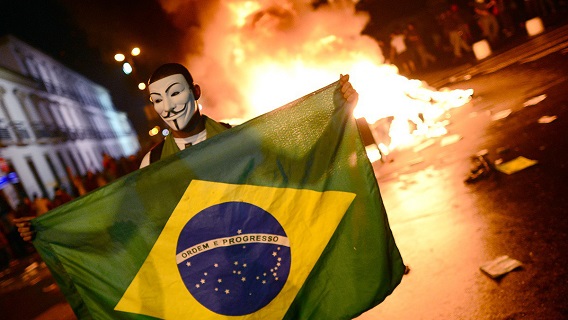Is Brazil becoming a true market oriented modern economy?
Corruption and a corrupted way of doing politics, populist measures and relaxed fiscal and monetary policies showed that Brazil still has a long way to go before becoming a developed country.

Corruption and a corrupted way of doing politics, populist measures and relaxed fiscal and monetary policies showed that Brazil still has a long way to go before becoming a developed country.

by Decio Oddone, O&G Officer at Prumo Logistics
In 1985, after twenty-one years of military rule, a democratic government rose to power in Brazil. President José Sarney, a former supporter of the military, replaced President-elect Tancredo Neves, who was in surgery just before his presidential inauguration ceremony and died only weeks later.
Sarney’s government was marked by high inflation, the default of the external debt and economic crisis. During his presidency also, the Mercosul (the regional trade agreement) was created and so was a new constitution. From a historical perspective, the eighties are remembered as the “lost decade.”
In 1989, the country held its first presidential election in three decades. A young governor, Fernando Collor, defeated a popular union leader, Lula, in a tight election. In order to fight rising inflation rates, Collor froze almost all bank deposits. His popularity never recovered. His government was characterized by inflation and recession, as well as by market opening and privatization. Ultimately, he was impeached under corruption charges.
Itamar Franco, his vice-president, was a discreet senator and initiated what became a transition government. After replacing the Finance Minister a few times, he decided to appoint Foreign Minister Fernando Henrique Cardoso to the position. Cardoso prepared a plan that led to the control of inflation. Itamar Franco’s government had stabilized the economy, renegotiated foreign debt, privatized public enterprises and started a period of prosperity and income increase.
Cardoso defeated Lula in the 1994 elections to become president in 1995. His government was marked by reforms, stability, income increase, privatization and the end of Petrobras’ (the state oil giant) monopoly. It was also marked by several external crises (commodities prices, Mexico, Argentina, Asian tigers, Russia). During his term, congress approved a controversial bill authorizing reelection. He defeated Lula again in the 1998 elections. In his second term, he devalued the currency, approved fiscal reforms but faced an energy crisis that reduced economic growth. His government lacked the ability to properly communicate the benefit of these reforms for economic stability. Facing strong opposition from Lula and the Workers Party, he ended his second term with low approval ratings.
After promising to keep Cardoso’s fiscal and monetary policies, Lula won the 2002 elections. The transition was performed in an organized way. Lula adopted sound policies during his first term. The commodities boom bolstered the government to implement social policies and to increase the average income of the lower classes. Corruptions scandals and accusations did not stop Lula from being reelected in 2006.
The economy was in good shape. The country’s sovereign debt was upgraded to investment grade by the credit rating agencies. Democracy was consolidated. A populist leader adopted conservative measures for the economy. Many analysts considered that Brazil, after the successful transition occurred in 2002, was prepared to become a modern democracy with a market economy. Unfortunately, that was not true.
As a response to the Lehman Brothers crisis, Lula decided to loosen controls in public spending. Initially the results were satisfactory. The impact of the economic downturn was not strong in Brazil. The country grew more than seven percent in 2010. Lula’s popularity increased. Dilma Rousseff, Lula’s candidate, who had never disputed an election, won the presidency. She took over in 2011.
Soon the poor management of the economy showed its impacts. The problems started to mount. The lack of macro reforms, the lack of integration of Brazil with the world economy because the government had decided to prioritize a south-south foreign policy, the change of the petroleum law after the discovery of world class reserves offshore Brazil followed by the commodities crisis had a heavy price. The economy lost dynamism. Rousseff tried to double the bet, further increasing public spending and reducing interest rates artificially. Inflation rates grew. Sovereign debt was downgraded to junk status. Corruption scandals involving Petrobras, construction companies, politicians and the government coalition political parties started to be investigated. Petrobras was obliged to reduce investments and sell assets.
Rousseff had won a second term on a very tight election. The economy stopped. The country faced the deepest recession ever. Last May an impeachment process was approved. Rousseff stepped aside. Vice-president Michel Temer took over until the Senate concludes the impeachment judgment, which is expected to occur until next September. The country started a disputed transition.
In the first months of the interim government a few signs of recovery can be seen. Is Brazil now finally transitioning to become a market oriented mass democracy? In 2016, are there signs of the transition many analysts forecasted back in 2002?
In 2002 Brazil had a consensual transition. Lula was elected in a democratic election. For the first time a worker, from the lower classes, having attended only basic education, had the opportunity to run the country. Cardoso’s government executed the transition in a very organized way. Many were optimistic with the change. The economy was initially conducted in a solid manner. During a few years, many believed the 2002 transition was a successful test that was a symbol of Brazil’s transformation into a modern economy.
Lula’s second term and Rousseff first term showed this was an erroneous perception. Corruption and a corrupted way of doing politics, populist measures and relaxed fiscal and monetary policies showed that Brazil still has a long way to go before becoming a developed country.
But why can it work better now? Is the Brazilian society finally maturing and ready to make the right choices?
During the past thirty years, the country walked several steps in the right direction, consolidating its democracy, reducing its inflation rates, decreasing inequality, increasing average income and approving important reforms.
This crisis taught important lessons. It gave way to debates on what is missing for Brazil to become a successful market oriented economy. Brazilian society shows signs that it is beginning to understand that public spending, stimulated by the 1988 constitution, and that tax burden cannot grow indefinitely. That political parties should change the way they conduct politics. That corruption must be fought. That fiscal and monetary policies should be solid.
History has shown that big changes come in difficult moments in Brazil. Democracy was reestablished during a government conducted by a Vice-president. Inflation was controlled by a Vice-president who took over after the first impeachment process ever.
In 2016, a government conducted by someone who was not originally elected President may have the opportunity to take additional steps to modernize the country. This transition may represent the moment in which Brazil leaves behind populist measures and decides to become a market oriented modern economy, complementing the process started in 1985 when the country chose to become a true democracy.
